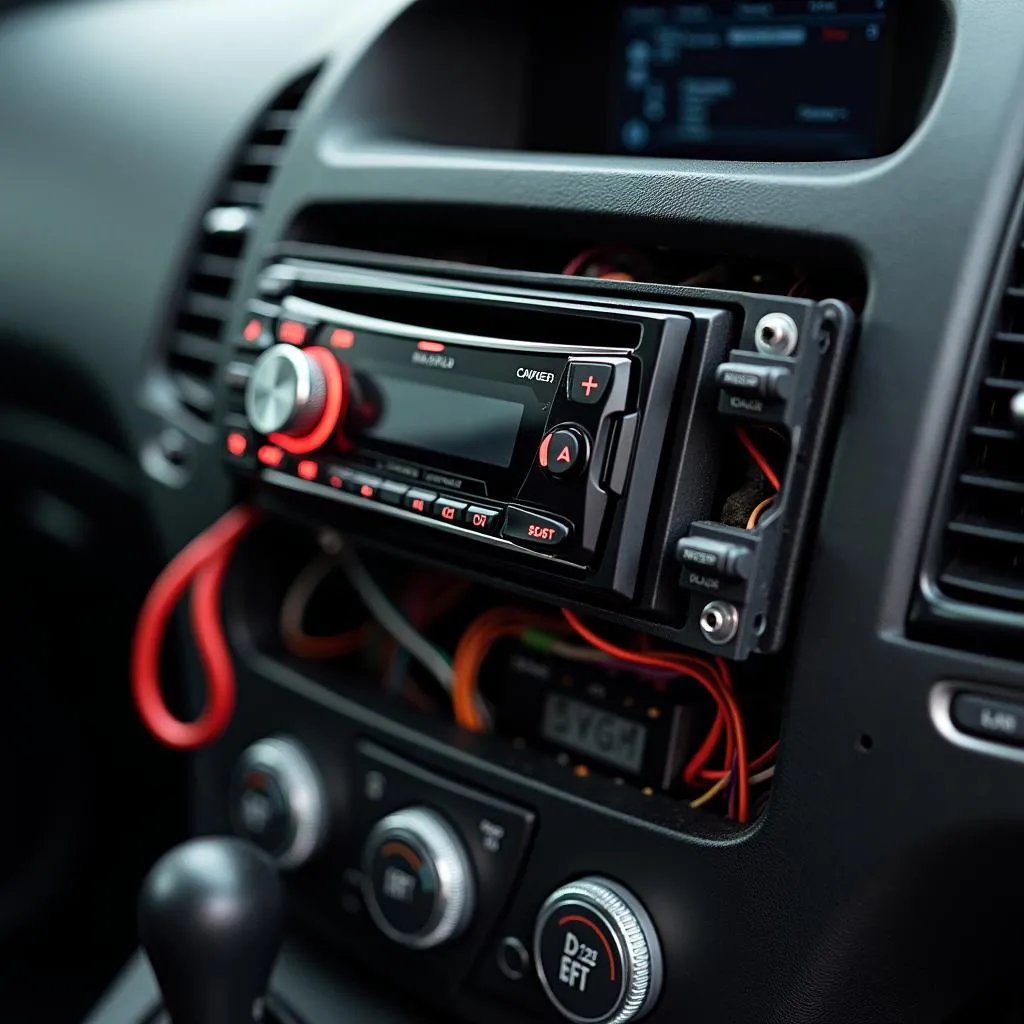If you’re driving a 2019 Toyota Tundra and your brake light warning pops up on the dashboard, it’s crucial not to ignore it. This warning indicates an issue with your braking system, which could jeopardize your safety and that of others on the road. While some causes might be minor, others can be serious and require immediate attention. This article delves into the common causes of a 2019 brake light warning in a Toyota Tundra and offers potential solutions to get you back on the road safely.
Common Causes of a 2019 Toyota Tundra Brake Light Warning
Several factors can trigger the brake light warning on your Tundra. Here are some of the most common culprits:
-
Burnt-Out Brake Light Bulbs: This is the most frequent cause. Brake light bulbs have a limited lifespan and eventually burn out. When this happens, the electrical circuit is broken, and the brake light warning illuminates.
-
Blown Fuse: The brake lights on your Tundra are connected to a fuse that protects the electrical circuit. If there’s a surge or short circuit, the fuse can blow, cutting off power to the brake lights and activating the warning light.
-
Faulty Brake Light Switch: The brake light switch is located above the brake pedal and activates the lights when you depress the pedal. Over time, this switch can wear out, malfunction, or become misaligned, leading to a brake light warning.
-
Wiring Issues: Corrosion, damage, or loose connections in the wiring harness that connects the brake lights can disrupt the electrical flow and trigger the warning light.
-
Brake Fluid Leak: Brake fluid is essential for transmitting the force from your foot to the brakes. A leak in the brake lines, calipers, or wheel cylinders can cause a drop in brake fluid pressure, illuminating the warning light.
Diagnosing the Problem
Before attempting any repairs, it’s crucial to pinpoint the exact cause of the brake light warning. Here’s a step-by-step guide to help you diagnose the issue:
-
Check the Brake Lights: Ask a friend or family member to step on the brake pedal while you inspect all three brake lights (two on each side and the high-mounted one). If any light is out, replace the bulb.
-
Inspect the Fuses: Locate the fuse box, usually under the dashboard or hood. Refer to your owner’s manual to identify the correct fuse for the brake lights. Visually inspect the fuse for a broken wire or use a multimeter to test its continuity. Replace the fuse if it’s blown.
-
Examine the Brake Light Switch: The brake light switch is typically located above the brake pedal arm. Depress and release the pedal while listening for a clicking sound. If the switch doesn’t click or feels loose, it might need adjustment or replacement.
-
Check for Brake Fluid Leaks: Carefully examine the brake lines, calipers, and wheel cylinders for any signs of fluid leaks. Look for wet spots, drips, or puddles of brake fluid. If you suspect a leak, it’s crucial to address it immediately as it can significantly impact braking performance.
Remote Diagnostics and Software Solutions
In today’s technologically advanced world, remote diagnostics and software solutions have become increasingly prevalent in the automotive industry. For certain issues related to the brake light warning on your 2019 Toyota Tundra, remote services might be available.
Remote Diagnostics: Some manufacturers and specialized automotive service providers offer remote diagnostics services. Through a secure connection, a technician can access your vehicle’s computer system wirelessly, retrieve diagnostic trouble codes, and assess the issue. This can be particularly helpful for identifying sensor faults or electronic malfunctions related to the brake light system.
Software Updates and Programming: Occasionally, software glitches or outdated software versions in your Tundra’s electronic control unit (ECU) can cause warning lights to malfunction. Remotely, technicians can install software updates, reprogram modules, or make necessary adjustments to the vehicle’s software to resolve these issues.
It’s important to note that the availability and scope of remote diagnostics and software solutions may vary depending on your vehicle’s specific model, year, and the service provider’s capabilities. Contacting your authorized Toyota dealer or a reputable automotive service provider specializing in remote diagnostics is recommended to inquire about the availability of these services for your 2019 Tundra.
Conclusion
Addressing a brake light warning promptly is crucial for maintaining the safety and reliability of your 2019 Toyota Tundra. By understanding the common causes, performing a thorough diagnosis, and considering available solutions, you can ensure your Tundra’s braking system remains in optimal condition, providing you with peace of mind on the road. If you’re unsure about any aspect of the diagnosis or repair, it’s always best to consult a qualified mechanic or your authorized Toyota dealer for professional assistance.


